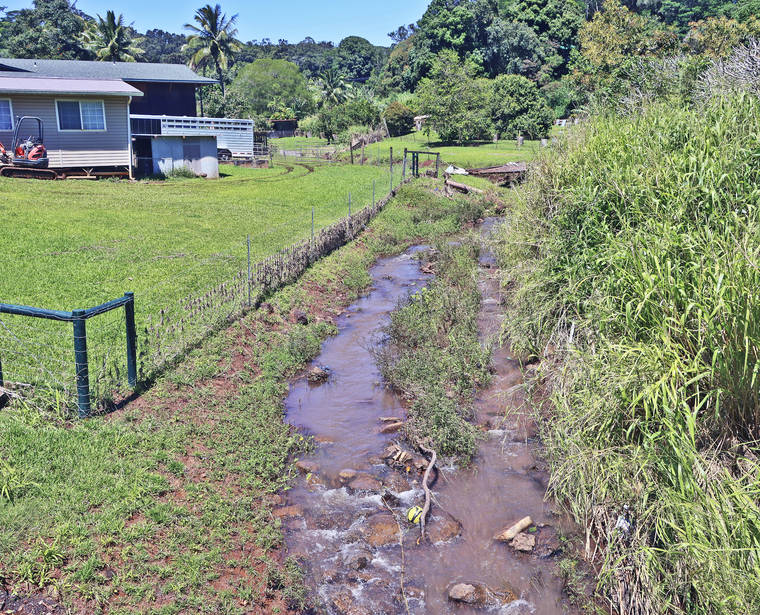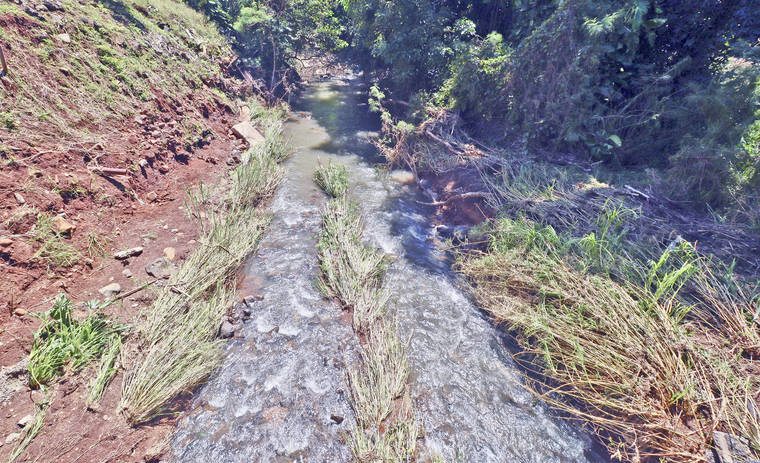LAWA‘I — After more than a century, baseflow, or fair-weather flow, of the Lawa‘i Stream will now be able to pass continuously without obstruction.
A Tuesday decision from the Commission on Water Resource Management, a division of the state’s Department of Land and Natural Resources, has restricted diversions of the Lawa‘i Stream, reverting back to a continuous flow to protect downstream and other instream uses.
This decision, Bridget Hammerquist, president of Friends of Maha‘ulepu, said would “discourage hau bush and other invasive vegetation from blocking the stream channels. Keeping the stream channels clear will go along way to reduce flooding that has been caused by the overgrowth of vegetation.”
The McBryde Sugar Co., Ltd., which operated from 1899 to 1996, had diverted the Hanapepe, Wahiawa and Lawa‘i streams to irrigate sugarcane on drier lands from ‘Ele‘ele to Koloa.
The Lawa‘i Ditch was also used to bring water from the stream to Koloa, and the MyBryde Sugar plantation, which added concrete to the low rock wall dam, impacting the stream’s flow.
To increase water availability, pumps brought surface water from Hanapepe Valley to the plantation with hydroelectric pumps. Baseflow in Lawa‘i comes from groundwater discharge from perched water bodies in the Koloa Volcanics, according to a Jan. 2021 report.
Now, the area is populated by residential, resort facilities and small agriculture, not plantations, but much of the infrastructure continues to supply high volumes of water to agriculture use.
A 2013 flood event cut a channel into the bank around the diversion in Lawa‘i, and McBryde Sugar began adding more concrete, according to Hammerquist.
By 2015, the commission started to study the characteristics of the streams and contact irrigation managers, community members, landowners, ‘Aha Moku representatives and stakeholders in an attempt to understand how the use of the stream currently.
The stream has two branches. On one branch of the stream, Diversion 812, is located below the confluence that is controlled by gates. The commission recommended modifications to keep the low flow in the stream to pass through.
Ayron Strauch, a hydrologist with CWRM’s stream protection and management branch, said there is “so much build-up” in the stream, and the sediment needs “consistent flushing.” Keeping more water in the stream will be beneficial to instream use.
Calling the decision “historic,” Hammerquist noted community support to make the change happen.
“In response, the state’s hydrologist came to Kaua‘i, met with concerned residents, toured the stream channel while measuring and studying flow patterns over the past two years,” Hammerquist said. “The Commissioners adopted the amended recommendations of the hydrologist today, noting the importance of balancing stream flow and health against the off-stream agricultural use.”








How can the public be informed about these meetings? I would like to have a Koloa community meeting to look at the 3/12/21 Koloa flooding event. We need an explanation- yes it was a big rain but also the new tree tunnel road was a river of water coming to Koloa town..